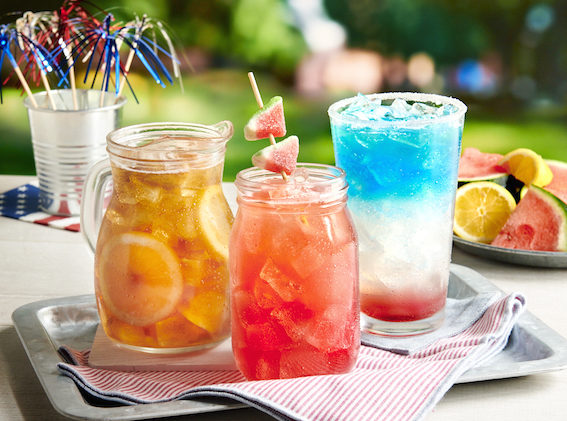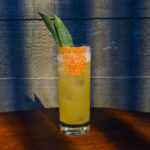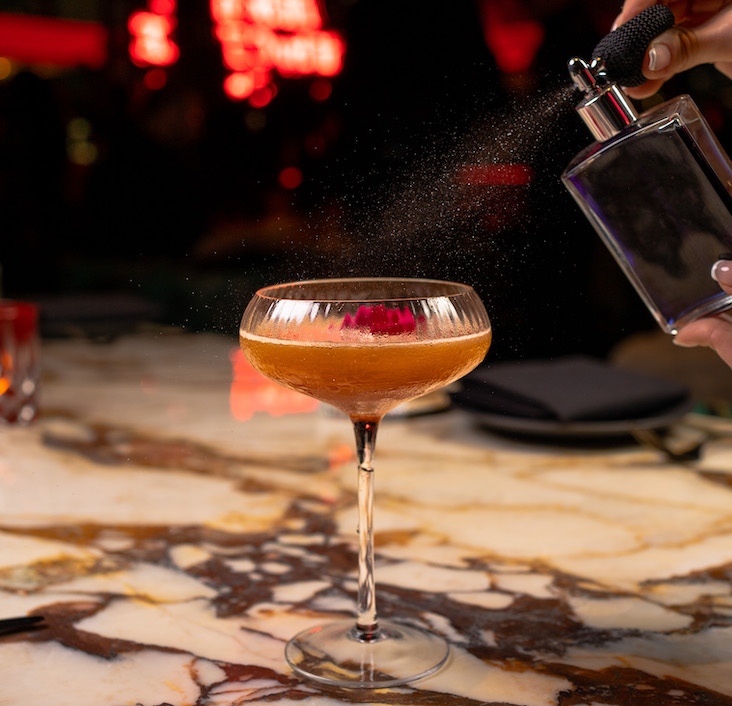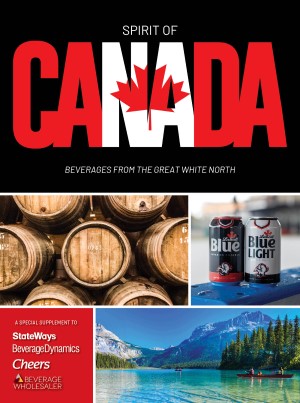Since it launched nearly a quarter-century ago, Smokey Bones has weathered everything from recessions and pandemics to closures and new ownership to changing consumer palates, preferences and habits. The Plantation, FL-based casual dining brand is thriving today and leaning into its protein power with the tagline “Meat is What We Do,” promoting its signature smoked meats and barbecue along with burgers, steaks and seafood.
It’s also beefing up the bar offering. “Everything we are doing is designed to make our bar and beverage program more relevant to our guests,” says Nichole (Cole) Robillard, Smokey Bones’ chief marketing officer. The chain aims to introduce cocktails “that change people’s perceptions of not only Smokey Bones, but what a casual dining experience can — and should — be.”
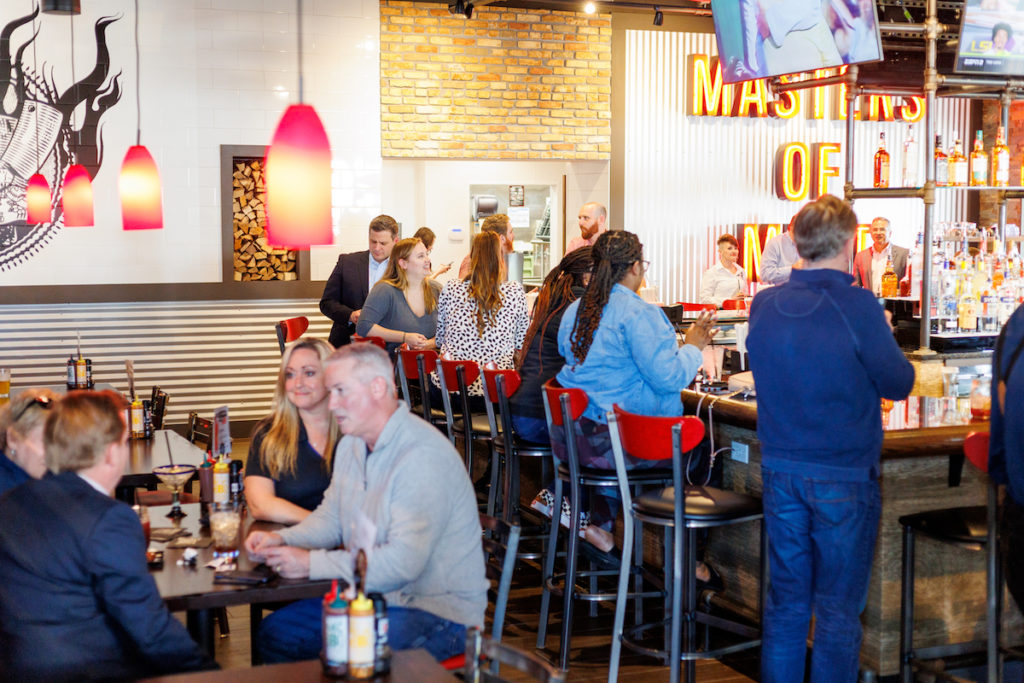
The company, which now operates 62 units in 16 states, recently relaunched its beverage program, introducing a new core menu as well as inventive and visually arresting limited-time-only (LTO) cocktails. Smokey Bones is committed to growing the beverage program significantly this year, Robillard notes.
Look-at-me LTOs
For the first quarter of 2022, Smokey Bones rolled out a line of Candy Coated Cocktails. The LTO drinks included Pink Strawberry Swizzle, made with Pink Whitney vodka, RumHaven coconut rum, Strawberry Real puree, fresh lemon juice and club soda, garnished with pink Starburst candies, and the Honey Bear, with New Amsterdam vodka, RumHaven coconut rum, honey, fresh lemon juice and pineapple juice, garnished with gummy bears. Both drinks are priced at $9.99.
The Blue Lagoon, an aquarium-themed cocktail served in a fishbowl-like single-use vessel, combines NewAmsterdam pineapple vodka, DeKuyper Blue Curaçao, RumHaven coconut rum, Monin Margarita mix and club soda, with Nerds candy as “gravel” and Swedish fish “swimming” through the drink. It’s priced at $14.99 with the collectible fishbowl and $9.99 for pint glass refills. The Candy Coated Cocktails have been the top-selling LTOs by more than five times over recent LTOs, Robillard says. “Our LTO cycle is quarterly, and we typically introduce three new cocktails at each LTO window.”
All American Summer Sippers, the second quarter’s LTO cocktail theme, will be available from May 24 through Aug. 15. The lineup includes the Honey, Don’t Tea-se Me, which adds Jack Daniel’s Tennessee Honey to an individual-sized pitcher of Twisted Tea; Watermelon Wind-Up, with Three Olives vodka, Monin watermelon puree, DeKuyper Triple Sec, citrus sour, and Red Bull Red Edition Watermelon; and the Rocket Bomb, with Deep Eddy lemon vodka, DeKuyper Blue Curaçao, Minute Maid lemonade, Grenadine and club soda, layered for a patriotic effect. Cocktail sales lead in terms of overall beverage mix, with beer second in guest preference, says Robillard.

Smokey Bones typically keeps the core cocktail program for a year, to maximize the value of partnerships and allow guests time to explore and enjoy the menu. The top-selling alcoholic beverage on the entire menu is Tito’s Strawberry Lemonade. Launched this year, the drink benefits CORE (Children of Restaurant Employees), a nonprofit that provides financial relief to families of restaurant workers with children that face a health crisis, injury, death or natural disaster.
Other strong performers are the Strawberry Dream Margarita, the Top Shelf Long Island Lighter Fluid, the Tropic Like It’s Hot, and Pineapple Passion ’Rita, as well as its signature Smooth Bourbon Blackberry Lemonade. Most of the cocktails range in price from $7.99 to $9.99, Robillard says, although some of the more premium options exceed $10.
“We have a terrific Happy Hour program, and one of the strongest late-night businesses in the industry,” says Robillard. Smokey Bones offers both an early and latenight Happy Hour where legal, and serves its full menu until closing, which is usually 1 a.m. in most locations.
Hot spot
In addition to cocktails, beer and wine, Smokey Bones offers a mix of composed shots and straight shooters. Some of the more popular traditional shots are the Lemon Drop and Green Tea shooters, Robillard says, but several new additions have gained loyal followings. These include the Cinnamon Toast Cereal shot, Jolly Good Time and Vegas Bomb. “We want our guests to have fun at our barsand in our restaurants, so we’re giving them more ways to explore the menu – responsibly, of course, as these are all standard shot-glass pours.”
The chain began adding zero-proof cocktails late in 2021, in response to the growing consumer demand for low- and no-ABV drinks. “When we relaunched the beverage program this March, we built out these offerings even further; we now have seven hand-crafted mocktails on the menu,” says Robillard.
These range from lemonades and limeades to spirit-free renditions of popular cocktails, to Red Bull-based energy boosts. “The category has grown significantly in volume for us over the past year,” she adds.
Selling sizzle and steak
Robillard co-owns the beverage program with Chef Peter Farrand, the chief food & beverage innovation officer, who joined Smokey Bones in late 2019. Farrand oversees the culinary, flavor and innovation aspects; Robillard creates the marketing hook and leverages the program to entice people into the restaurants.
For the past few years, “beverage has made up a larger percentage of sales than you would traditionally expect from most casual brands,” Farrand says. “We are always looking at flavor trends and how they may be received by our guests to work them into the program.”
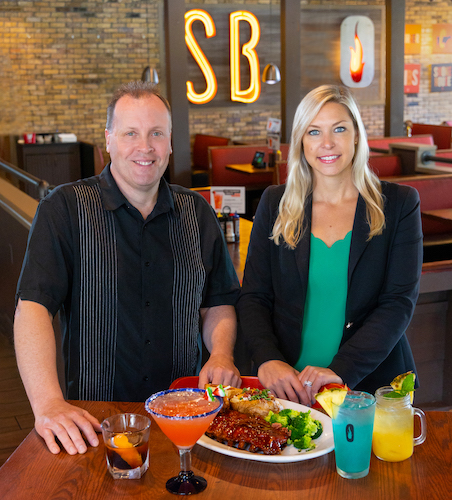
Smokey Bones has pared down and simplified the beverage program to help it grow. “It’s important to give our guests choices and variety, but at the same time, make it simple to find what they are looking for,” he says. “We continue to evaluate our inventory and number of SKUs to simplify the operation, which allows us to bring in new items as trends and tastes evolve to keep things manageable for the operators.”
For example, Smokey Bones aims to keep the cocktail components in the three- to five-ingredient range, as well as minimize drinks that require muddling or other time-consuming methods. This lets the team make drinks faster with greater consistency, says Farrand. “The most effective way to increase beverage sales is be able to get the first drink out quickly in order to generate another sale.”
The overall beverage strategy has been “to give the brand an identity and focus to let the customer know what we are, what we stand for, and what they should expect when they come in,” he says. “Sure, we will have their favorites and the old standbys, but through LTOs and regular innovation, there will be subtle nods to the seasons, fun pairings with food, and some ‘Instagram-able’ offerings.”
Farrand also works with several supplier partners to integrate beer or spirits into the menu items. Examples include Dragon Wings featuring Fireball Cinnamon Whisky; a Bulleit Bourbon glazed pork tenderloin and wing sauce; “Angry Wings” featuring Angry Orchard Hard Cider, and beer cheese that features a rotating Samuel Adams beer. It’s launching two summer LTO menu items made with Hornitos Black Barrel tequila, which pair with its new Pineapple Passion ’Rita.
Smokey Bones set out to be a classic barbecue restaurant, but tastes have evolved and the dining scene has become more global, presenting new opportunities, Farrand says. “Expanding the offerings with big, bold, bright flavors have allowed us to give guests a reason for coming back more often.”
Meat the brand
Darden Restaurants founded the barbeque sports bar concept in 1999, opening the first Smokey Bones Bar & Fire Grill location that year in Orlando, FL. The brand expanded throughout Florida, the Midwest and Northeast, growing to 129 locations.
Darden had planned to take the concept national, but then in 2007 announced it was closing 56 Smokey Bones restaurants and selling the rest. The company said that the remaining Smokey Bones locations were a viable business, but not consistent with Darden’s vision for a national concept. An affiliate of Sun Capital Partners bought those restaurants in 2008 for about $80 million.

The company regrouped, focusing on branding, beverage, barbeque and the elements that make it unique from other concepts. Restaurant veteran James O’Reilly — former CEO of Long John Silver’s — joined Smokey Bones as CEO in November 2019. The company that year began transitioning from Bar & Fire Grill to simply Smokey Bones, and repositioned the brand to “Masters of Meat.”
Robillard joined Smokey Bones as vice president of marketing in March 2021, and was promoted to CMO this past March. Throughout her career in advertising and promotions, “I was fortunate to be able to partner with great brands in the food and beverage space, like Bacardi, Boston Market, Chuck E. Cheese, Jamba Juice, McDonald’s, Molson Coors and Outback Steakhouse,” she notes.
What’s more, Robillard had cofounded a farm-to-table restaurant in Washington, D.C. called Beuchert’s Saloon 10 years ago. She quickly learned the complexities of the operations side of the business.
Other lessons learned: “That a strong bar and beverage program can mean the difference between surviving and thriving, that your people are ultimately your frontline marketing team, and that strong cross-functional partnerships are truly instrumental to success,” she says.
Adapting for the future
Smokey Bones has invested heavily in technology during the past year, including a full infrastructure overhaul with both hardware and software updates. The chain, which recently began using BeerBoard’s SmartBar technology to digitize its bar management, also added new websites and e-commerce capabilities, direct third-party partner integration, and is piloting the Wisely table management system, Robillard says.
Smokey Bones also operates two virtual restaurants, The Wing Experience and Burger Experience, both of which were launched in 2019 in partnership with Uber Eats. It’s adding a drive-thru to a restaurant in Bowling Green, KY, and if that’s a success, the chain will seek additional locations to potentially retrofit, as well as add the feature to future builds where possible. “We are adapting our business and restaurants to accommodate the changing habits of today’s diners,” Robillard says.
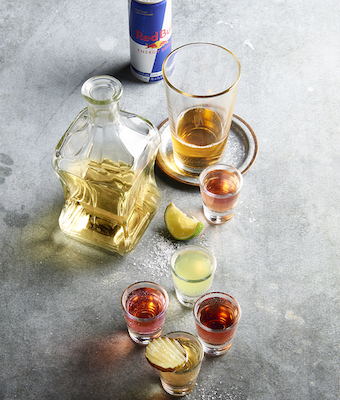
The first new restaurant location since 2019, opened this past in April in Avon, IN, has a smaller footprint than its traditional units, with a more intimate dining experience, says Robillard. What’s more, it boasts a separate bar space, a waiting area with bench seating, dedicated to-go area with a separate entrance and parking spaces, and a custom menu board and point-of-sale system.
“We’re also piloting a new, sleeker beverage menu board format in this location, to which guests have been incredibly receptive,” Robillard says. “We have a couple more new restaurants and remodels planned, and given the early success with the Avon location, expect to be incorporating similar design elements into future builds.”
Now a $200 million to $300 million company, Smokey Bones has a strategic goal of 10% to 15% net new unit growth per year. Robillard says that it’s currently scaling up towards that run rate, which translates to six to 10 net new opens per year.
“We have a strong brand and guests are responding very well to our protein-powered cuisine, crave-worthy cocktails and lively in-restaurant experience,” Robillard says. “We are excited to expand our footprint and bring our meat mastery to more people in more places.”

